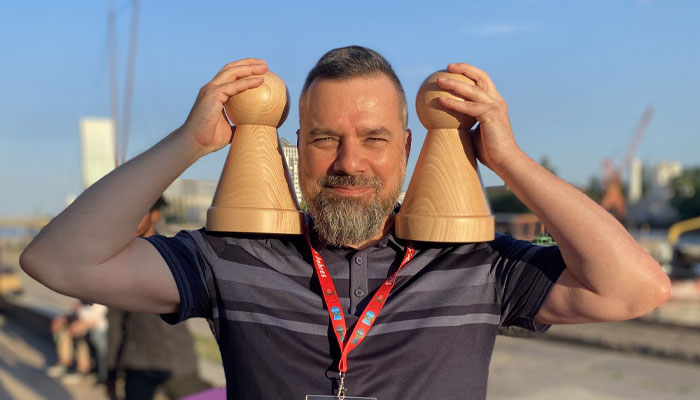Space Cow’s Benoît Forget on the key to creating compelling children’s games

Benoît it’s great to connect.
It’s a shared pleasure!
To kick us off, what set you on the path to a career in board games? Was it always part of the plan?
It’s undoubtedly passion that led me to turn board games into a job. I fell into this world when I was a teenager and it has never left me. Later, in parallel with another job, I wrote board game reviews for various French-language media. Without realising it, I started to build up a network. That’s how I became project manager at Libellud in 2010, and then set up my own company – Purple Brain Creations – in 2013. That’s really when my passion turned into a life project.
The games I edited were distributed by Iello but I worked alone, at every level. It was a great experience for five years and despite my small company with just one employee, some of the games won awards such as The Three Little Pigs and The Hare & the Tortoise. These include Origins Awards, The Dice Tower seal of Excellence, As d’Or nominee, Golden Geek, and so on.

At the end of 2017, Asmodee offered to buy my company. So I became publishing head of studio at Asmodee and created Space Cow to publish games for children aged four to seven.
Fantastic. And for anyone new to Space Cow, how would you describe the sorts of games you publish? What should designers be pitching to you?
As mentioned, we publish games for children aged four to seven. It’s a plus if the parents join in, but we publish games for children first and foremost. We don’t try to appeal to an audience that isn’t our own. For us, a game for children must be adapted to the learning skills required by the age group. For example, a game for a four-year-old is very different than one for a six-year-old, because the level of learning at school is not the same for either. This is what designers and inventors need to understand first if they want to work with us.
A very useful insight for designers there, thank you. Now, you’ve collaborated with plenty of designers over the years. What do you think is the key to a successful designer/publisher relationship?
I think the key – and this is just my point of view – is to keep everyone’s tasks separate. Everyone has to be the best at what they do and not encroach on the tasks of others. This is especially true in a small team like ours – we have four people on board. Otherwise, the energy is dispersed.
For example, when we develop a game, it’s between the designer and us. For illustration, the work is done between the illustrator and us. This separation means that we don’t waste energy unnecessarily and it’s my job to make sure that we don’t.

Make a lot of sense. Space has enjoyed success recently with Kids versions of popular titles, like Unlock Kids and Mysterium Kids. It seems like a very tricky task to take a popular game and make it work for a younger audience. How do you approach it?
Indeed, it’s more difficult to adapt an existing, well-known game for children than to develop a new game. The first thing we do is analyse the heart of the original game; its backbone. For example, for me, the heart of Mysterium is not that it’s an investigation game, but that it’s an asymmetrical game based on restricted communication. And that’s exactly what Mysterium Kids is, but with a different child-friendly way of communicating.

As far as Unlock is concerned, for us the heart of the game is bringing together two cards to find a third. And that’s exactly what we’ve done with Unlock Kids, using symbols instead of numbers to make it child-friendly. In addition to this, Unlock Kids has been developed around the constraints of Unlock, such as the presence of an app. This is also a development driver for us, and constraints often lead to great things.

Absolutely. Another one of your new titles is Crossing the Woods from Leo Colovini. What can you tell us about it? And what made this a good fit for Space Cow?
I fell in love with this game as soon as Leo Colovini showed it to me. Why? Because this game is a little gem of mechanical purity which introduces the mechanisms of cooperation with restricted communication. As great designers like Reiner Knizia, Wolfgang Kramer, Alex Randolph and many others have shown, in the development of a game, it’s often easier to make it complicated than to make it simple. I really like this idea of saying that it’s always easier to add than to take away. And this is especially true when publishing board games for children – although this should also apply to games for adults too.

It looks great. Before we start to wrap things up, what do you feel is Space Cow’s most underrated title?
I think A Fistful of Daisies, because it’s a smarter game than it looks.

I was sold on the battling cows theme alone! And how do you fuel your creativity? What helps you have ideas?
I would say that children’s literature has been a big influence for me and I continue to buy children’s books – but for me! As I am also a gamer who plays miniature games, roleplaying games, board games and social games, I also draw my inspiration from all this playful richness.
Benoit, a huge thanks again.
–
To stay in the loop with the latest news, interviews and features from the world of toy and game design, sign up to our weekly newsletter here

























